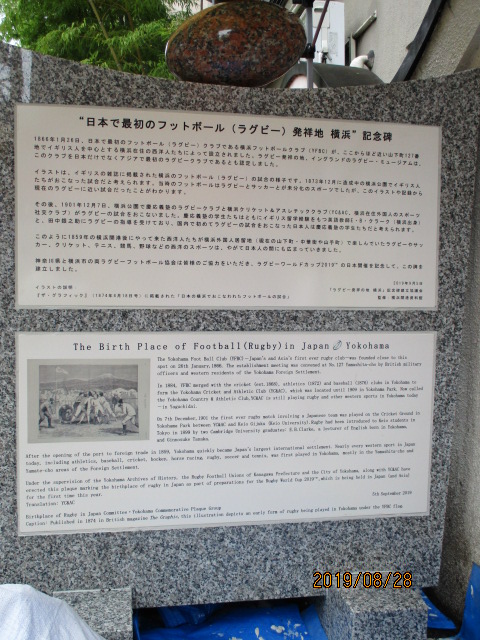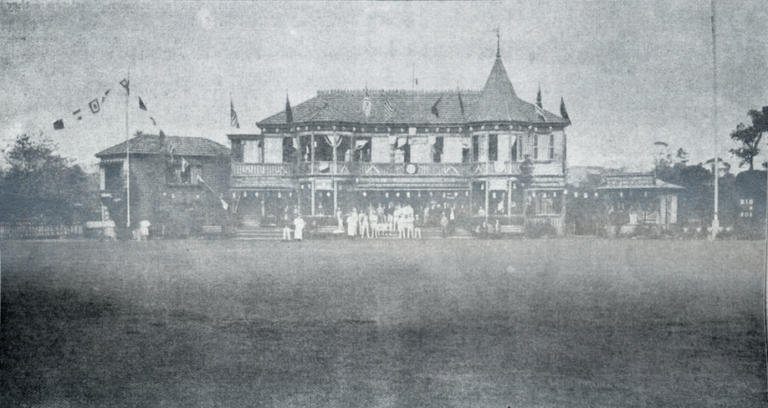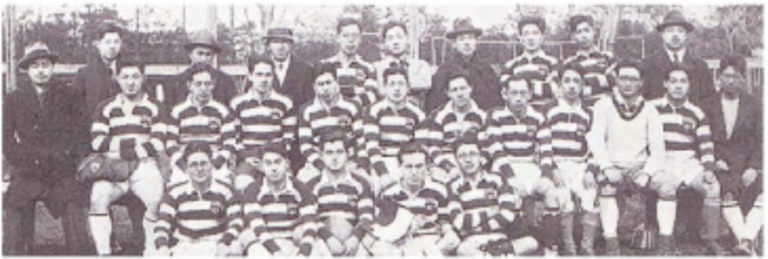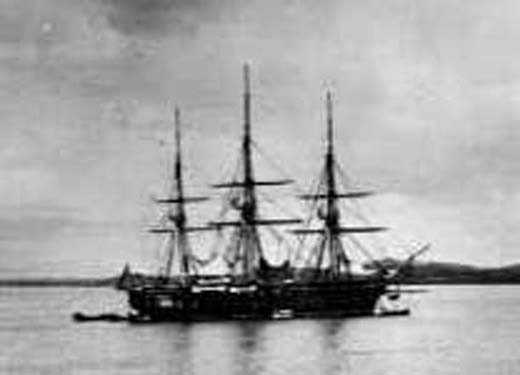1952 Win by YC&AC-based “Japan Foreigners” Rugby Team against Hong Kong Uncovered
In my collection of tour and match programs covering Japan’s international rugby, there is a 1952 official tour program made by the Japan Rugby Football Union (JRFU) for the first tour by a foreign rugby team after WW2 – in January 1952.
The touring team was Hong Kong RFC and the tour seems to have been arranged as phase one of a plan by the JRFU to rapidly expose the best Japanese rugby players to as many foreign teams as possible before the high profile tour by Oxford University in the autumn of the same year. The Hong Kong tour was followed two months later by a tour by a team of New Zealanders representing the KForce (or Kayforce) then fighting in the Korean war.
As early as 1930, the JRFU had tried hard to persuade the International Rugby Board (IRB) and England’s RFU to send a high profile team from England to play in Japan but to no avail. At last, in 1952, Oxford University accepted an invitation to tour Japan, but the skills of the Japanese players and teams were still far behind those of the leading teams in the 1930s.
It appears that the Hong Kong tour was put together at short notice and was short in duration possibly because the Hong Kong players could not spare very many days in Japan; and there was, unusually, no game against All Japan. The tight schedule meant Hong Kong had to play four games in six days from January 25 to January 30. The fact that the game against Japan Foreigners took place only one day after the game against All Kanto, which resulted in a 3-3 draw, was likely a factor in determining the result.
Life in Japan in 1952
Before going into more details about the Japan Foreigners game this article focuses on, it might be a good idea to write something about life in Yokohama, Tokyo and Japan in 1952. The major cities in Japan excluding Kyoto had been destroyed by American bombing in early 1945 and living conditions were desperate for Japanese people, so war and the military overshadowed daily life. The rebuilding of those cities was only proceeding slowly and it was not until after a massive reconstruction program undertaken as part of the preparation for the 1964 Tokyo Olympics that the urban environments in Japan that we know today started to appear. The country was still in a legal state of occupation by American and the British Commonwealth Occupation Forces (BCOF) with significant contributions from rugby-playing New Zealand troops named the JForce (and Kayforce) who arrived in 1946 and operated in Hiroshima and Yamaguchi Prefecture until 1948 where they set up rugby competitions. When the Korean war started New Zealand provided a similar volunteer brigade named the KForce (and Kayforce) between 1950 and 1954. At the YC&AC there was a fairly rapid turnover of members and players and there weren’t many families or student members who could play to make up team numbers. Making a team often involved borrowing BCOF-related young men.
Short History of Japan Foreigner Teams
The first game between Japan-based rugby players and an overseas team was an Interport held in Kobe in 1908 between a combined YC&AC and KR&AC team and the Shanghai RFC (see side bar). After Japanese took up the sport in numbers in the 1920s, an early objective for club and regional teams was to play and win against the largely British YC&AC and KR&AC teams of foreigners. If the two foreign clubs put out a stronger combined team it was called the Japan Foreigner Team and sometimes the Japan Exiles. Previous articles in Connect introducing Bill Salter and Norman Lamport have covered such games. Even in the 1930s the Japan Foreigner teams usually lost to, for example, the regional Kanto team.
The following description in the YC&AC’s Bulletin (the equivalent to the club’s Connect today) of the run-up to the Japan Foreigners match against Hong Kong by a YC&AC member interestingly suggests that the games were to at least to some Brits much more than simple rugby matches.
“Our honour was at stake on Friday January 25th, when Hong Kong took the field against Meiji University, and we all held our heads a little higher when we left the ground. When the best that Kanto could produce was held to a draw two days later we knew that we still belonged to the family that taught the world the game. Thus bathed in reflected glory we took the field the next day against Hong Kong. Some three hours later several sore but happy gentlemen were again bathing. This time in their own glory (and in Tokyo Onsen) – the score, All Japan Foreigners 13, Hong Kong 5.”
The main story in the Bulletin about the game is as follows:
Mike Robinson, Dorset Eccles, Freddie Young, Paddy Graham, Roy Davies and David Millar were selected to play from the Y. C. & A. C.. Mike Langley, Ian Meffan and Alan Docking travelled up from the K. R. & A. C.. Sgt. Furstenberg of the South African Air Force played in the centre and we had the services of five members of the New Zealand Artillery Regiment including the never- to-be-forgotten “BLUEY” Harris whose game at full back showed him to be a player of extreme capability.
It was a hard give and take game. Hong Kong had rested nine of their players from the two earlier games, but had able substitutes and were a strong hard-running side. The first twenty minutes looked bad for Japan Foreigners. The Hong Kong forwards had the weight and height and pinned Japan in their own 25. Their excellent hooker Hopkins got the ball almost every tight scrum. Only a brilliant tackle by the New Zealander Mangum, an outstanding back row forward, who tackled and held up a man almost twice his size on the line, prevented a score. Time and time again the splendid fielding and kicking of Harris at Full Back, kept Hong Kong out.
Then the unexpected happened. The first time the play moved into the Hong Kong 25, Mangum picked up a loose ball, saw his chance, and scored after a twenty yard run. Young converted. Bingley had two shots at a penalty and shortly after from the same spot, 35 yards out. The first was wide but the second dropped over, and we were eight points up.
By now the game had evened up, helped by sound tackling by the Japan Backs and aggressive play by our wing forwards that were always up with the play, and exploited any opportunity. Hong Kong however were still getting more of the ball in the tight and the line outs, and the Japan backs had little chance to attack. Five minutes before half time Docking got away, passed to Dorset Eccles who cut through, and Davies, who was up as usual, took the pass and scored, Freddie Young again banged it over confidently, and half time came with Japan thirteen points up.
Could Japan hold out against the heavier and stronger Hong Kong forwards? They not only did but territorially Japan had 75% of the game in the second half. Our forwards were absolutely first-class in what turned out to be a really tough forward battle with several stoppages for injuries. Somewhat against the run of the play Hong Kong scored with a try by Campbell which was converted by the same player. For the next ten minutes an encouraged Hong Kong pinned Japan on their line. Our defence held out and we managed to sweep the ball to the other end of the field. From there with a minute to go the Hong Kong backs got moving at last. They traveled 75 yards getting the ball out to Stewart, who ran round Mike Robinson who had been injured and scored between the posts – so everyone thought but Findlay Cessford the referee declared the ball had not been grounded. Then the whistle blew for no side.
It is difficult to single out players in a match that was won by teamwork. Harris, the young New Zealander with a great future, was brilliant at Full Back. All the other backs defended well. In the forwards Paddy Graham, leading the pack, Miller and Meffan could not have played more honest games and their best work was not always noticed. Davies and Mangum played a fine game in the back row and were always catching the eye. Findlay Cessford was an admirable referee that always had control of none too easy a game.
Free drinks at the Marunouchi, together with the Hong Kong side, followed by an attack on Ginza spearheaded by a number of the Y. C. & A. C. boys at the Showboat rounded off the day, very successfully.”
The Showboat was a huge establishment employing maybe over 1,000 Japanese hostesses while the Marunouchi is probably the Marunouchi Hotel.
The Japan Times’ short report on the game failed to mention the YC&AC or KR&AC at all and called the Japan Foreigners Team a “picked team of British Commonwealth Troops in Korea and British businessmen in Japan.” Its one-line description of the match was at variance with the YC&AC account which stated that the Hong Kong team were bigger and stronger: “The Hong Kong team listing seven players in the lineup who had not seen action in the previous two games was undoubtedly the faster squad, but it was terribly erratic and perhaps it was the costly fumbles of its three-quarters at the critical moments that cost it the game.”






